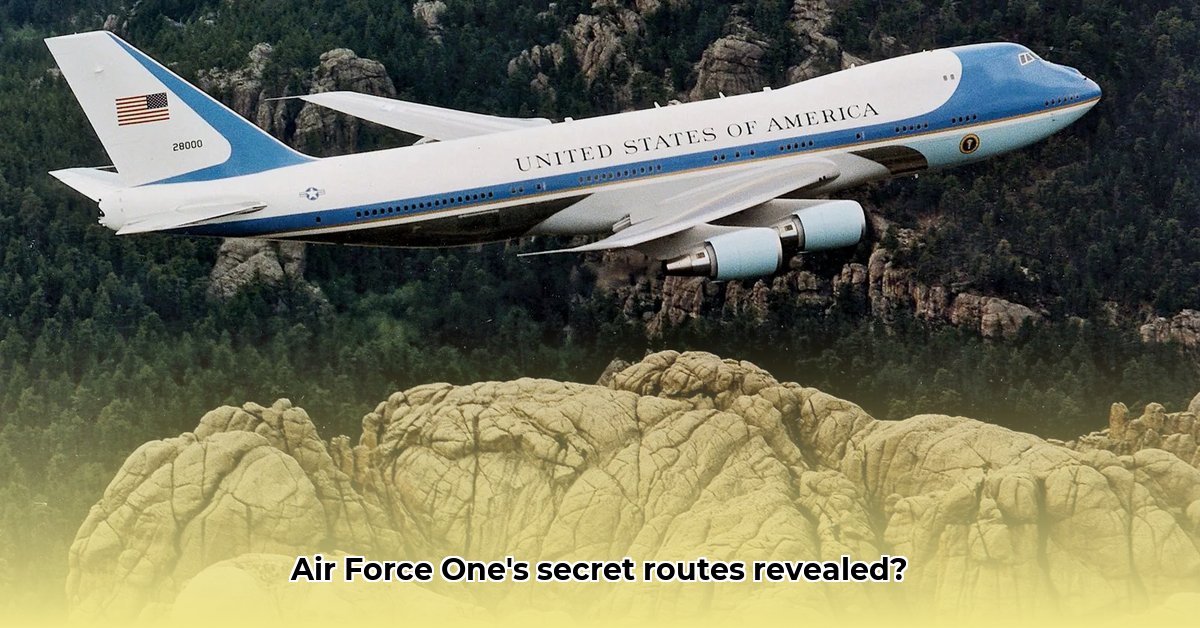
Waar Vliegt Airforce One? The President's Flight Path Unveiled
Ever wondered where Air Force One lands? It's not as simple as checking a flight tracker, is it? This isn't your average flight; we're talking about the President's personal aircraft, a symbol of American power, and its movements are shrouded in secrecy. Let's unravel the mystery behind Air Force One's flight path and the intricate logistical operation that keeps the President soaring.
The Flying Fortress: Understanding Air Force One
First, a crucial point: Air Force One isn't a single plane, but a call sign for any US Air Force aircraft carrying the President. Currently, this is usually a pair of heavily modified Boeing 747-200s, nicknamed VC-25s. Imagine massive, airborne fortresses, equipped with state-of-the-art communication systems, advanced medical facilities, and a lavish presidential suite. These aren't ordinary planes; they demand airports with exceptionally long runways, stringent security protocols, and extensive ground support – making the choice of landing spot a strategic decision.
Selecting a Landing Spot: A Symphony of Security
Choosing an airport for Air Force One is far from arbitrary. Security is paramount. The ideal airport needs to be conveniently located, but also capable of handling the massive security operation. This often translates to larger, well-equipped international airports. Smaller airports simply lack the infrastructure to manage the sheer scale of security personnel and logistical demands. It's a meticulously planned operation, like a complex ballet, requiring flawless coordination between various agencies and perfect timing. But, what are the biggest security considerations?
- Threat assessment: Constant monitoring of potential threats informs airport selection.
- Runway length: Air Force One needs exceptionally long runways for safe takeoffs and landings.
- Ground support: Efficient ground support is vital for swift and secure disembarkation.
- Proximity to destination: The airport must be conveniently located to minimise travel time.
Threats and Defences: Protecting the President
When planning an Air Force One trip, nearly every conceivable threat is assessed – from terrorist attacks to mechanical failure. Advanced security measures, including electronic countermeasures and a dedicated team of security experts, are always in place. Contingency plans are developed for various scenarios, from inclement weather to unforeseen hiccups. The President's safety is, and must always be, the top priority. This constant vigilance requires a dynamic and adaptive security apparatus that evolves with emerging threats.
The Future of Presidential Travel: The Next Generation Air Force One
The current VC-25s are showing their age, prompting a planned upgrade to Boeing 747-8s (though the timeline has been adjusted). These newer planes will boast better fuel efficiency, advanced technology, and even more sophisticated security features. This modernisation ensures the President's continued safe and comfortable travel. However, this upgrade significantly increases the complexity of the operation, demanding even more intricate planning and coordination.
Key Takeaways: Air Force One
The question, "Waar vliegt Airforce One?" transcends mere geographical location; it's a glimpse into a complex, dynamic system designed to protect the President. It's a fascinating blend of cutting-edge technology, intricate logistics, and an unwavering commitment to safety. While the specifics remain largely confidential, it's clear that a colossal effort goes into ensuring the President's secure travel.
"The security of Air Force One isn't just about the plane itself; it's about the entire ecosystem surrounding it," says Dr. Anya Sharma, Security Expert at the Georgetown Center for Security Studies. "It’s a constantly shifting landscape, requiring consistent adaptation and innovation."